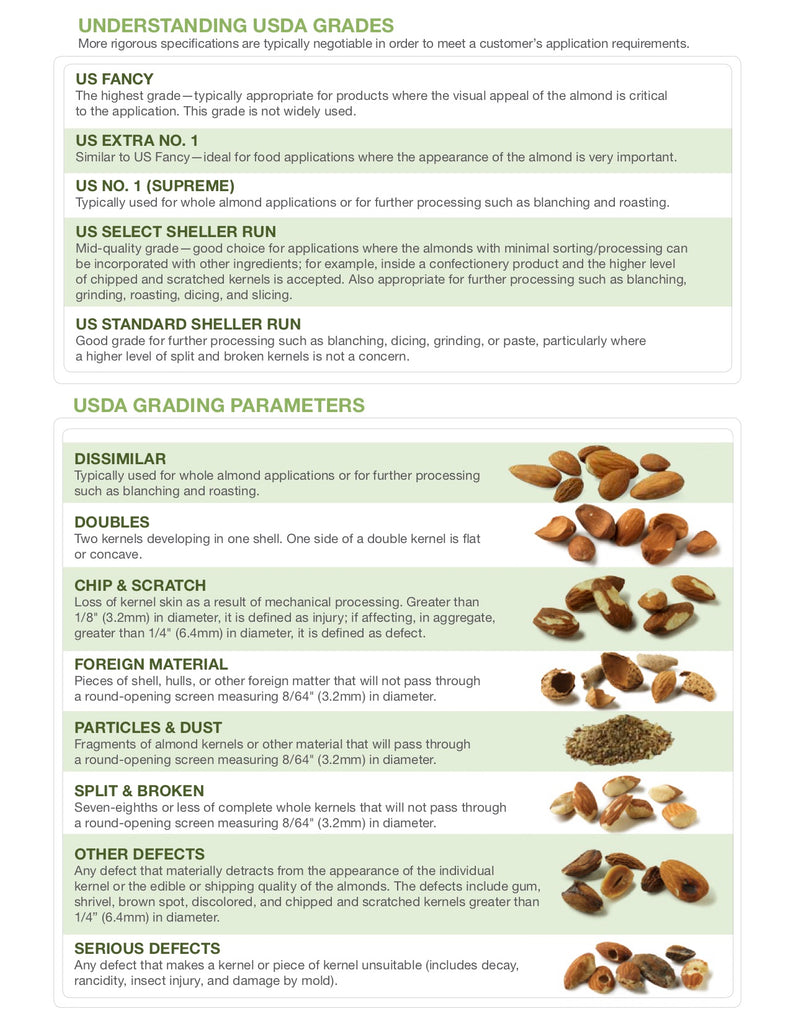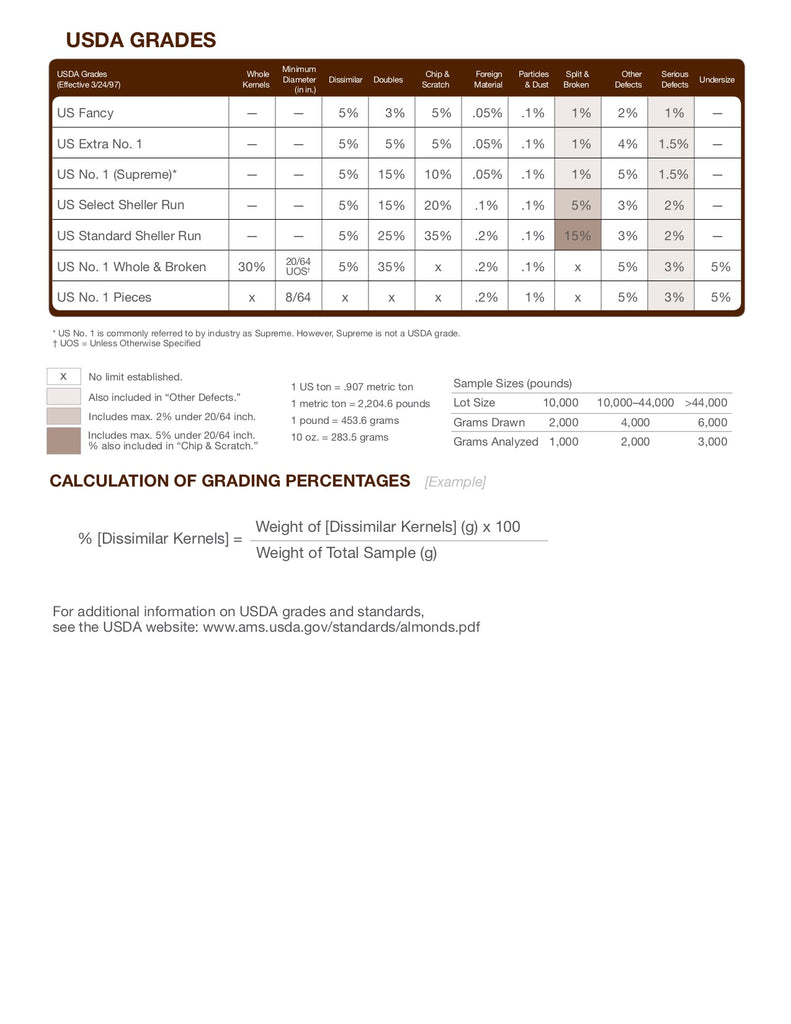Almond Grades
The United States Department of Agriculture (USDA) developed a method on how to grade almonds and determine quality. True California selects almonds that are "US No. 1 Supreme" or higher. Most almonds sold in the US are of a lesser grade called "Standard Sheller Run" (SSR). This grade contain more chips, splits, foreign material, and other defects. Almonds graded "US Supreme No. 1" or higher are hard to come by because of processing techniques or more likely because the harvest simply didn't produce enough almonds to make the grade. These higher grades are also often eye-sorted, which you can imagine is very labor-intensive. Ironically, almost all of the highest grade United States almonds are exported to countries like Germany, Spain, and Japan. We want to change that.
Some things to look for when you buy a bag of almonds:
If you'd like to learn more about almond grades, please message us through our Contact Us or visit the USDA's page Shelled Almond Grades and Standards:

Some things to look for when you buy a bag of almonds:
- Insect Damage - Lesser grade almonds include almonds that have insect damage, meaning an ant probably took a bite out of the almond before you did! Those weird looking holes in your almond aren't natural.
- Mold - Some almond varieties naturally taste more bitter than others. But if you eat an almond that's much more bitter than the rest in your batch or if they're chewier than normal, it's probably old and stale. Many almond brands will freeze their almonds from one or even two seasons ago before they bring them out for sale.
- Chips, Scapes, and Loss of Skin - The more chips and less almond skin you have, the few nutrients you take in because the almond skin holds a lot of the almond's beneficial nutrients that don't make it onto the nutrition label.
If you'd like to learn more about almond grades, please message us through our Contact Us or visit the USDA's page Shelled Almond Grades and Standards:


